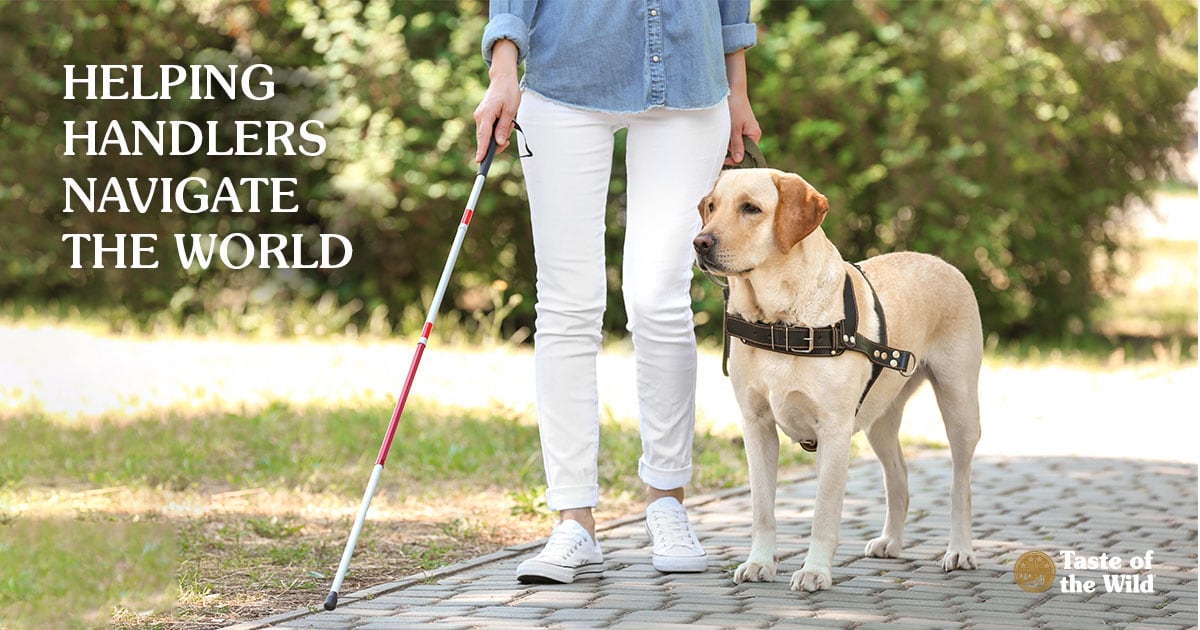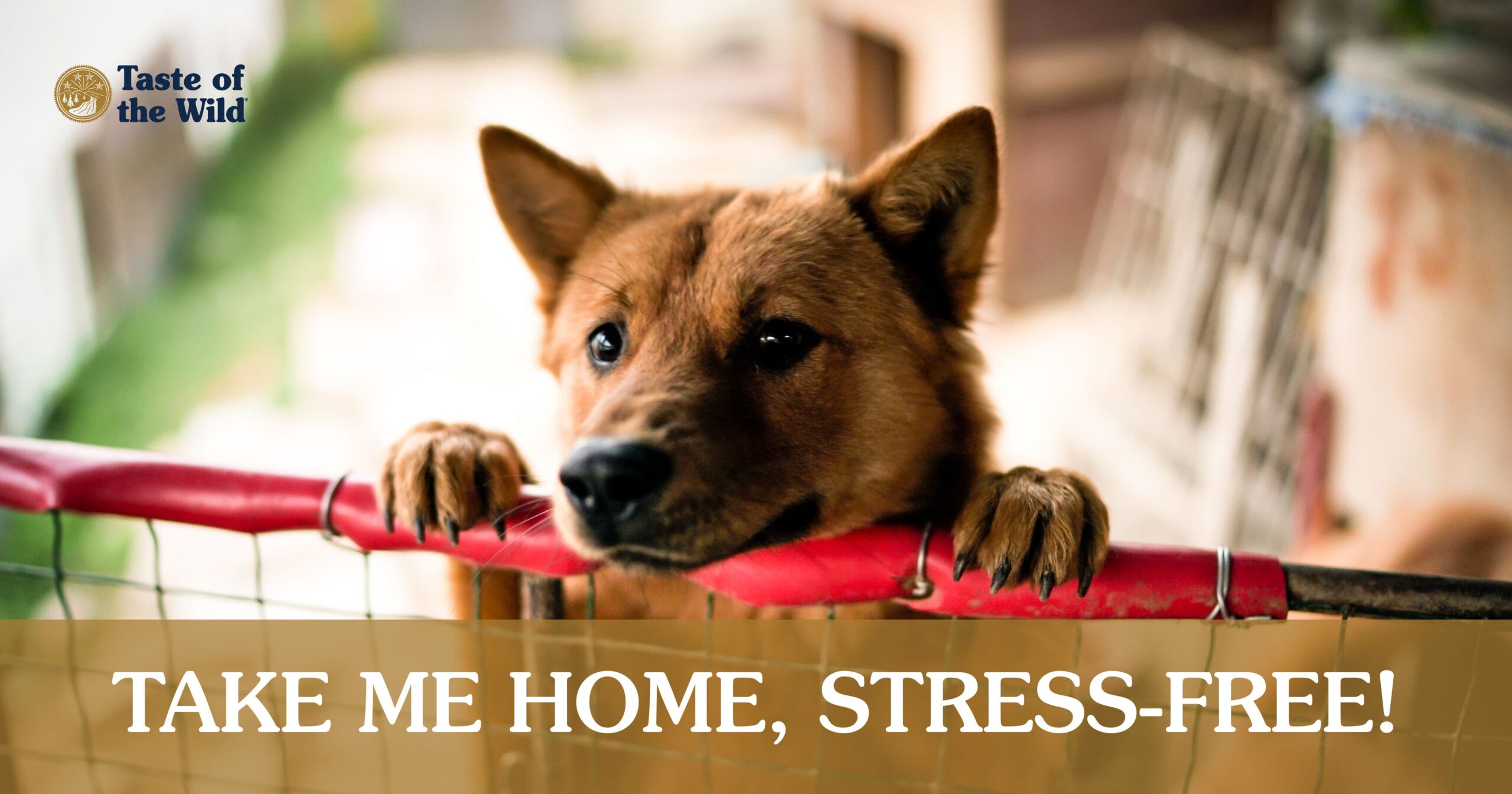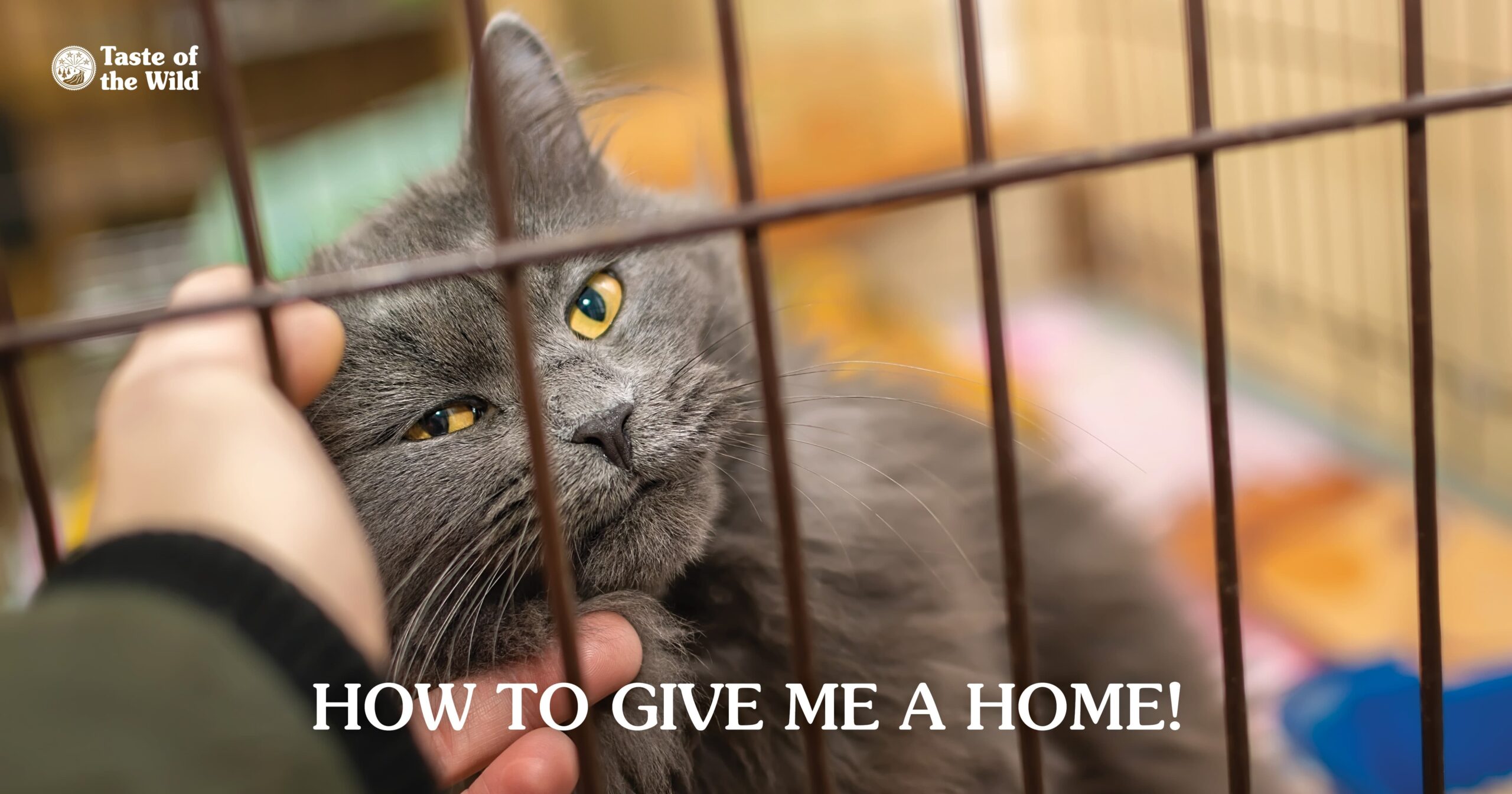Dogs at Work: The Path to Getting a Guide Dog
Thursday, April 23, 2020 | Adoption

Last year, Thomas Panek made history at the New York City Marathon — not because he broke time records, but because he was the first blind person to run the half marathon with the aid of a relay of guide dogs: Waffle, Westley and Gus.
As president and CEO of Guiding Eyes for the Blind, a nonprofit school that trains guide dogs, it was Panek’s way of encouraging other people with vision loss to do what makes them happy.
But what, exactly, do guide dogs do? And how does someone with vision loss get a dog of their own? In recognition of International Guide Dog Day on April 29, we’ll share the scoop on these dedicated canines.
Guide dog job description
The term “seeing-eye dog” is a bit of a misnomer because it implies that these dogs act as the handlers’ eyes, leading the way for them. That’s not really true. Before being matched with a dog, most handlers, who may be blind or retain some low vision, must demonstrate that they have orientation and mobility skills. It’s the handler’s responsibility to direct the dog to the post office, for example, and know how many blocks and turns it will take to get there.
The dog typically doesn’t know where the post office is located, unless it has been trained precisely to that location. It’s the dog’s job to guide the handler around garbage cans and other obstacles and alert the handler to the location of steps and curbs. Same goes for traffic lights: the dog doesn’t know when the light turns green. It’s the handler’s job to listen to traffic and determine when it’s safe to cross. Some dogs, if they sense the crossing isn’t safe, may decide not to cross, in an action known as “intelligent disobedience.”
Obtaining a guide dog
People interested in having a guide dog of their own must apply to one of the guide dog schools throughout the country. The schools, which are typically nonprofit and tax-exempt, are often able to provide the dogs at no cost to the handler, thanks to generous private donations and charitable giving.
Most schools require the handler to have basic orientation and mobility skills and be able to care for and work with a dog. Applicants are often interviewed and typically put on a waiting list ranging from a few months to a year or more.
Training the dogs
Guide dog schools generally breed their own dogs, usually Labrador or golden retrievers, Lab/golden crosses and, in some cases, German shepherds, to ensure dogs don’t suffer from genetic disorders. They also want dogs with a suitable temperament, going with those who are friendly, eager to please and not easily distracted.
Volunteer puppy-raisers usually take the dogs into their homes at about 8 weeks of age and provide socialization and obedience training until the dogs are about a year-and-a-half old. The dogs are then returned to the schools, where they undergo four to six months of intensive guide dog training.
Matching the dog to the handler
The dogs not only work with the handler, they live with them 24/7, so the schools make every effort to find a suitable match. They evaluate everything about the owner, from lifestyle and energy level to walking pace, from the amount of travel required for their job to whether they live in a noisy, fast-paced city or in a rural area. Then they find the right dog for that particular person.
Handlers meet their dogs when they come to the school for a two- to four-week training session. Even then, dogs may be switched to fine-tune the match. Once at home, handlers are expected to keep training the dogs on a regular basis so they don’t lose their skills. Guide dog careers typically span about eight years, after which they may retire and live out the rest of their lives with their handlers or with another adoptive family, either of which will spoil them with affection for a job well done.
The information in this blog has been developed with our veterinarian and is designed to help educate pet parents. If you have questions or concerns about your pet’s health or nutrition, please talk with your veterinarian.




